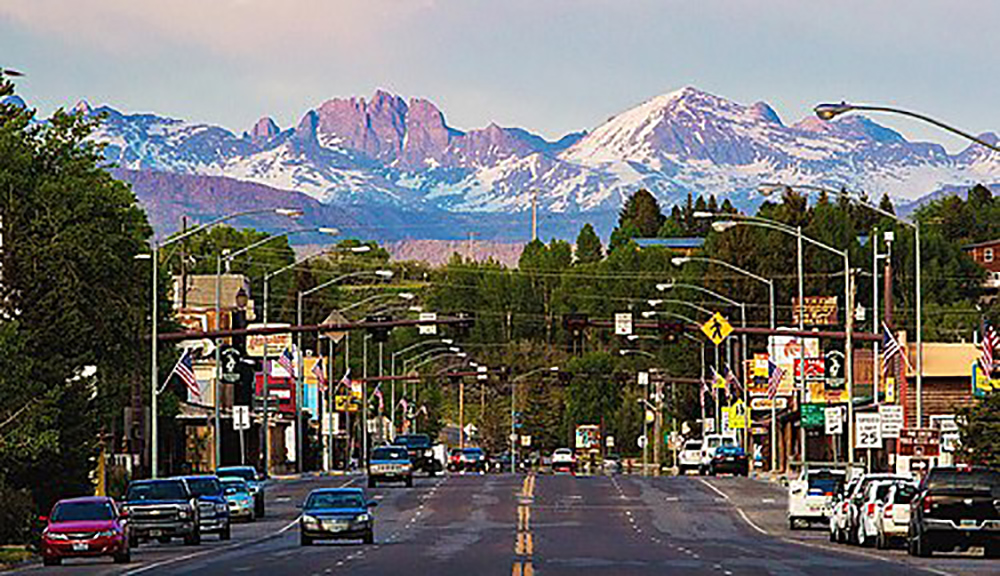Pinedale, Wyoming
From mountain ranches in Wyoming to vegetable fields in Yuma, water users look for ways to keep the Colorado River flowing.
By Brandon Loomis || Arizona Republic
PINEDALE, Wyo. — Cowboy Michael Klaren heaved hay bales onto his wagon, climbed aboard and urged his two workhorses to drag it across a meadow, the ground spongy with the meltwater from a snowstorm.
Wet boots had raised his spirits on this March morning, as had two wet cow dogs he called Woodrow and Gus. The meadow was off to a more promising head start on spring than he had come to expect after years of drought.
If left to run off in rivulets or percolate through the pasture, the moisture from the Colorado River’s prodigious Wyoming headwaters would collect in the nearby New Fork, join the Green River, and ultimately surge across three state lines before swelling the Colorado in southeastern Utah and buoying the Southwest’s depleted reservoirs.
But first, Klaren would wring some of it out for his next hay crop.
“Personally, I think the water that falls in Wyoming is Wyoming’s until it gets to Utah,” he said. “When it falls here, it’s our water.”
If it were that simple, Klaren and his mountain town would have little to fear. But 100 years ago, Wyoming signed onto a deal to divide the water that flows through the Colorado River basin among seven states. It’s based on a formula — one likely based on mistaken beliefs about the river itself — that did not award extra credit for living in the mountains where the snow piles up.
Colorado River and the debate over water rights begins in Wyoming
Instead, the states signed a compact allocating the water where it would readily be put to work. It meant the more populated states of California, Colorado and Arizona would get the biggest shares. And it meant in lean years, water users in places like Pinedale might go without, watching as runoff from the jagged Wind River Range flowed past the mountain ranches to farmers and cities far downstream.
Over time the government built massive dams near Las Vegas and Page to store the water for those big downstream users: a Yuma lettuce field, an Imperial Valley melon patch, the Phoenix suburbs, all stretching toward a desert horizon far from the river’s channel.
But more than two decades into a punishing drought that climate scientists say will likely intensify with more warming, the system can no longer supply everything that some 40 million people in a warming and drying region desire from it, or that grocers nationwide sell from its verdant fields. Since 2000, water demand and evaporation have exceeded the river’s flow, on average, by roughly 15%.
The federal and state governments that share the water are now urgently seeking conservation to save the river. Their negotiations could produce either a new system of sharing the pain of cutbacks or an impasse that ends in lawsuits as states and water users try to hang onto water promised them in a different time.









